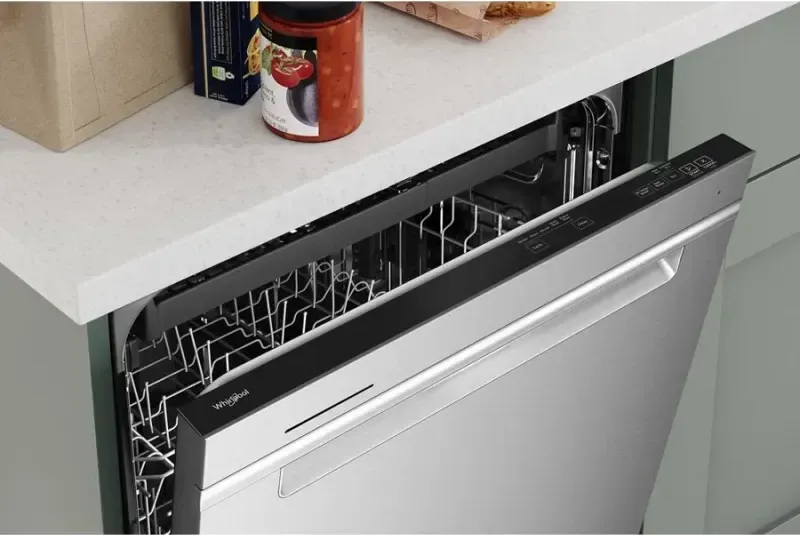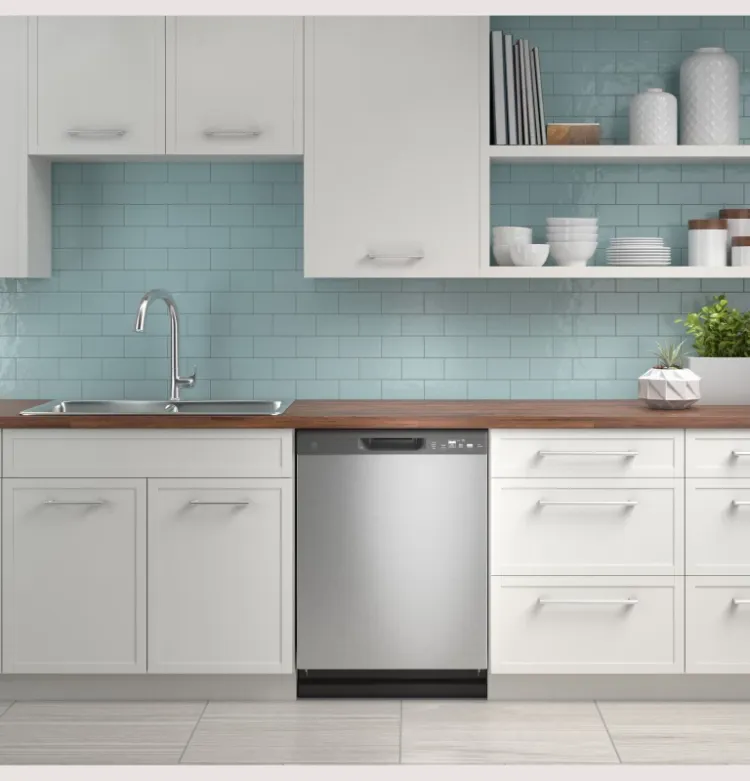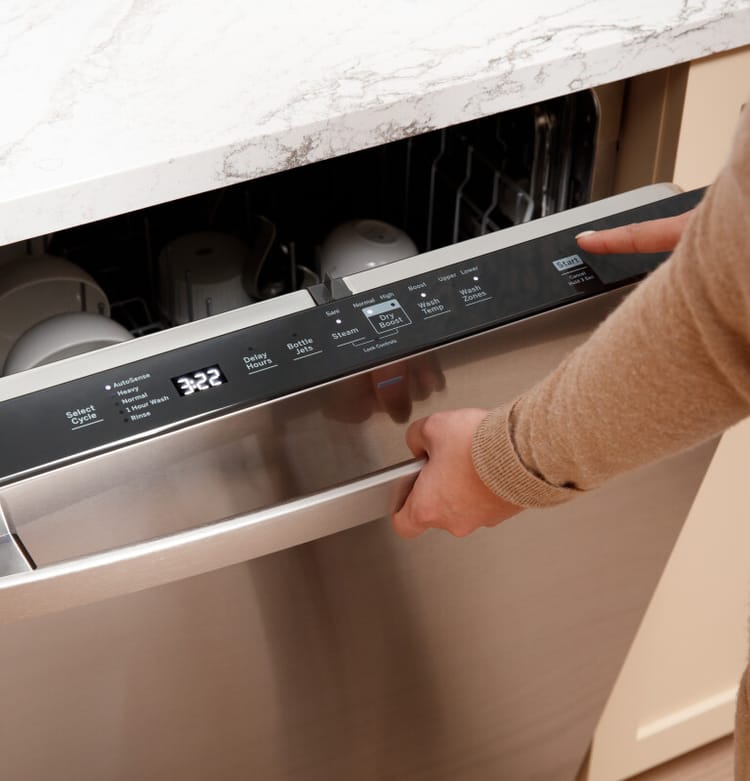How to Unclog Your Dishwasher: A DIY Guide For Your Home

Clogged dishwashers are a common headache for many homeowners. When your dishwasher isn’t draining properly, it can leave standing water in the bottom, causing unpleasant odors and leaving your dishes dirty. Most often, these clogs are caused by food particles, grease, or soap scum accumulating in the filter or drain hose. Recognizing these signs early and addressing them promptly can save you from more extensive repairs down the line.
Regular maintenance is essential to keep your dishwasher running smoothly. By cleaning the filter, checking the drain hose, and using simple solutions like baking soda and vinegar, you can prevent many common clogs and ensure your dishwasher operates efficiently. In this guide, we’ll walk you through the steps to unclog your dishwasher and offer some handy tips to keep it in top condition. With the right tools and a bit of know-how, you can tackle this task yourself and extend the life of your appliance.
Recognizing the Signs of a Clogged Dishwasher
Knowing the signs of a clogged dishwasher can help you address the issue before it becomes a major problem. Here are some key indicators that your dishwasher may be clogged:
Gurgling Sounds During Operation
If you hear unusual gurgling sounds when your dishwasher is running, it’s a clear sign that water is struggling to pass through the drainage system. These sounds are often caused by food particles or grease obstructing the flow of water, which creates air pockets and produces gurgling noises.
Water Backing Up into the Sink
Another telltale sign is water backing up into your kitchen sink while the dishwasher is in use. This usually indicates a clog in the dishwasher's drain hose or the sink’s garbage disposal. When the water can't flow freely through the drainage system, it often finds an alternate path, leading to backup in the sink.
Slow Draining or Standing Water in the Bottom of the Dishwasher
If you notice that your dishwasher drains slowly or there is standing water at the bottom after a cycle, it likely means there is a blockage. Standing water not only indicates a problem but also creates an ideal environment for bacteria and mold to grow, which can cause unpleasant odors.
Unclean Dishes After a Cycle
Finally, if your dishes aren’t coming out clean, it could be because the dishwasher isn’t draining properly. Food particles and soapy residue left behind on your dishes are signs that the water isn't circulating or draining as it should. This issue often stems from a clogged filter or drain hose, preventing the dishwasher from completing its cleaning cycle effectively.
By recognizing these signs early, you can take steps to unclog your dishwasher and restore its optimal performance. In the following sections, we’ll guide you through the process of diagnosing and fixing these issues to keep your dishwasher running smoothly.
Preparing to Unclog Your Dishwasher
Before you start tackling the clog in your dishwasher, it's essential to prepare properly to ensure a smooth and safe process. Here are the steps you should follow to get ready:
Gather Necessary Tools
Make sure you have all the tools and materials you’ll need for the job. Here’s a quick checklist:
- Bucket and Cup: These are essential for scooping out standing water.
- Towels: Have plenty of towels on hand to soak up any excess water and to protect your floor from spills.
- Soft Brush or Toothbrush: Useful for scrubbing the filter and other small components.
- Vinegar and Baking Soda: These household items are excellent for cleaning and deodorizing the dishwasher drain.
- Pliers: Handy for removing clamps or other parts that might be tightly secured.
- Flashlight: Helps you see into the darker corners and crevices of your dishwasher.
Ensure the Dishwasher is Turned Off and Unplugged
Safety is paramount when working with electrical appliances, especially those that use water. Before you begin, make sure the dishwasher is turned off and unplugged. If your dishwasher is hardwired and doesn't have a plug, turn off the circuit breaker that powers it. This step is crucial to avoid any electrical hazards while you’re working on the appliance.
By gathering the right tools and ensuring your dishwasher is safely powered down, you'll be well-prepared to start the unclogging process. In the next section, we'll guide you through the steps to identify and clear the clog, ensuring your dishwasher runs efficiently again.
Step-by-Step Guide to Unclogging Your Dishwasher
Now that you’re prepared, it’s time to get hands-on with the unclogging process. Follow these detailed steps to clear the blockage and get your dishwasher back to optimal performance.
Step 1: Empty the Dishwasher
Remove All Dishes and Racks
Start by removing any dishes, cutlery, and the dishwasher racks. This gives you clear access to the interior and makes it easier to reach the parts you need to clean. Place the dishes aside and wash them by hand if necessary to prevent any additional food debris from getting into the dishwasher.
Wipe Down the Interior
With the dishwasher empty, take a moment to wipe down the interior surfaces. Use a damp cloth or sponge to clean out any visible debris or food particles. Pay special attention to the bottom of the dishwasher, where most of the food debris tends to accumulate. This step not only helps in the cleaning process but also ensures that no additional debris falls into the newly cleaned filter or drain.
By starting with an empty and clean dishwasher, you can effectively identify and address the clog without interference from leftover food particles or other obstructions. In the next steps, we’ll dive into cleaning the filter and inspecting other critical components to ensure a thorough unclogging.
Step 2: Remove Standing Water
Use a Cup or Sponge to Bail Out Water
Once you’ve emptied your dishwasher, the next step is to remove any standing water from the bottom of the machine. Using a small cup or a sponge, scoop out as much water as possible and transfer it into a bucket. This process might take a few minutes, especially if there’s a significant amount of water. Be thorough to ensure you get most of the water out, which will make the subsequent steps cleaner and easier.
Place Towels Around the Base to Catch Spills
After bailing out most of the water, place towels around the base of the dishwasher to catch any residual water that might spill out during the cleaning process. This helps keep your kitchen floor dry and provides an extra layer of safety to prevent slips. Additionally, having towels on hand allows you to quickly wipe up any small spills that occur as you continue working on the dishwasher.
By effectively removing the standing water and preparing your workspace with towels, you ensure a cleaner and more efficient unclogging process. With this step complete, you’re ready to move on to cleaning the filter and inspecting other components to resolve the clog.
Step 3: Clean the Filter
Locate the Filter at the Bottom of the Dishwasher
Most dishwashers have a filter located at the bottom, usually under the bottom spray arm. This filter traps food particles and debris, preventing them from clogging the drain. To find the filter, look for a cylindrical or flat screen-like component. It might be secured with a few screws or a twist-lock mechanism.
Remove and Clean the Filter with Warm, Soapy Water
Once you’ve located the filter, remove it carefully. If it’s screwed in, use a screwdriver to take it out. Take the filter to your sink and rinse it under warm, soapy water. This helps to dislodge any grease and food particles stuck in the mesh. If the filter is particularly dirty, you might need to soak it for a few minutes to loosen the debris.
Use a Brush to Scrub Off Debris
For a thorough cleaning, use a soft brush or an old toothbrush to scrub away any stubborn particles from the filter. Make sure to get into all the nooks and crannies to ensure it’s completely clean. After scrubbing, rinse the filter thoroughly to remove any soap residue. Once clean, dry the filter with a towel before reinstalling it in the dishwasher.
By keeping your dishwasher filter clean, you can significantly reduce the risk of clogs and maintain efficient drainage. In the next step, we’ll check the drain hose to ensure there are no further blockages.
Step 4: Use a Baking Soda and Vinegar Solution
Pour Equal Parts Baking Soda and Vinegar into the Drain
Once you’ve cleaned the filter, it’s time to tackle any residual clogs in the drain using a natural cleaning solution. Mix equal parts baking soda and vinegar—about 1/2 cup each—and pour this mixture directly into the dishwasher’s drain. This combination creates a fizzing action that helps to break down grease, food particles, and other debris lodged in the drain.
Let It Sit for 15-30 Minutes
Allow the baking soda and vinegar solution to sit in the drain for 15 to 30 minutes. During this time, the chemical reaction between the two substances will work to loosen and dissolve any clogs. This step is crucial as it gives the solution enough time to penetrate and break down stubborn blockages.
Run a Hot Rinse Cycle to Flush Out the Clog
After the solution has had time to work, run your dishwasher on a hot rinse cycle. The hot water will help to flush out the loosened debris, ensuring that your drain is clear. This rinse also helps to eliminate any remaining vinegar and baking soda residue, leaving your dishwasher fresh and clean.
Using this simple yet effective baking soda and vinegar solution can greatly improve your dishwasher’s drainage and prevent future clogs. In the next step, we’ll check the drain hose to ensure there are no further obstructions.
Step 5: Check and Clean the Drain Hose
Disconnect the Drain Hose from the Sink or Garbage Disposal
Begin by locating the drain hose, which connects your dishwasher to the sink drain or garbage disposal. Carefully disconnect the hose at both ends. You may need to use pliers to loosen the clamps that hold the hose in place. Be prepared with a bucket or towels to catch any residual water that may spill out during this process.
Inspect and Clean the Hose for Blockages
Once the hose is disconnected, inspect it for any visible blockages. You can use a flashlight to help you see inside the hose. If you spot any debris, use a long, flexible brush or a straightened coat hanger to gently remove the obstruction. For a more thorough clean, run water through the hose to flush out any remaining particles. If the clog is stubborn, you can soak the hose in a mixture of warm water and vinegar to help break down the buildup.
Reassemble the Hose and Secure It Tightly
After ensuring the hose is clear, reattach it to the dishwasher and the sink drain or garbage disposal. Make sure to secure the clamps tightly to prevent any leaks. Double-check that the hose is properly positioned and there are no kinks that could impede water flow. Once everything is reassembled, run a short cycle to verify that the water drains correctly.
By diligently checking and cleaning the drain hose, you can resolve many common drainage issues and keep your dishwasher functioning efficiently. Next, we’ll discuss how to prevent future clogs and maintain your dishwasher.
Step 6: Run a Test Cycle
Reassemble the Dishwasher
After cleaning the filter, drain, and hose, it's time to put everything back together. Reinsert the cleaned filter into its place at the bottom of the dishwasher. Make sure all parts are securely reattached, including any screws or clamps that were removed. Double-check that the drain hose is properly connected to both the dishwasher and the sink or garbage disposal and that there are no kinks or loose connections.
Run an Empty Cycle to Ensure Proper Drainage
Once everything is fully reassembled, it's crucial to run a test cycle to ensure your dishwasher is working correctly. Start an empty wash cycle, selecting the hottest water setting available. Monitor the dishwasher closely during this cycle to see if water is draining properly and to check for any leaks. If the water drains smoothly and no leaks are detected, congratulations—you’ve successfully unclogged your dishwasher! If there are still issues, you may need to revisit some of the previous steps or consult a professional.
By running this test cycle, you confirm that your efforts have resolved the clog and that your dishwasher is ready for regular use. Regular maintenance and occasional checks can prevent future clogs, ensuring your appliance continues to run efficiently.
Preventive Measures to Avoid Future Clogs
Preventing clogs in your dishwasher not only saves you time and hassle but also extends the lifespan of your appliance. Here are some effective preventive measures:
Regularly Clean the Dishwasher Filter and Drain
Make it a habit to clean the dishwasher filter and drain at least once a month. This routine maintenance helps to remove food particles and debris that can accumulate over time and lead to clogs. Regular cleaning ensures that water flows freely through the system, maintaining optimal performance.
Rinse Dishes Before Loading Them
While dishwashers are designed to handle food particles, it's a good practice to rinse off large food scraps before placing dishes in the dishwasher. This simple step can significantly reduce the amount of debris entering the filter and drain, thereby preventing clogs.
Use the Correct Amount of Detergent
Using too much detergent can cause soap buildup in your dishwasher, leading to clogs. Follow the manufacturer's guidelines for the appropriate amount of detergent. Overuse of detergent can also leave residues on your dishes and the interior of the dishwasher.
Periodically Run a Hot Water Cycle with Vinegar
Running an empty cycle with hot water and a cup of white vinegar can help break down any grease or mineral deposits that may accumulate inside your dishwasher. This practice not only helps in keeping the appliance clean but also prevents buildup that could lead to clogs. Aim to do this once a month for best results.
By incorporating these preventive measures into your routine, you can keep your dishwasher running efficiently and avoid the inconvenience of clogs. Regular maintenance and mindful usage are key to ensuring the longevity and performance of your dishwasher.
When to Call a Professional
While many dishwasher clogs can be resolved with DIY methods, there are certain situations where it’s best to seek professional help. Here’s when you should consider calling in an expert:
Persistent Clog Issues After Troubleshooting
If you’ve followed all the troubleshooting steps and your dishwasher still isn’t draining properly, it’s time to call a professional. Persistent issues could indicate a deeper problem within the appliance that requires specialized tools and expertise to fix. Continuing to use a malfunctioning dishwasher can lead to more severe damage.
Multiple Household Drains Are Clogged
When multiple drains in your home are clogged simultaneously, it’s a sign of a more significant issue within your plumbing system, such as a blocked main sewer line. In this case, a professional plumber is needed to diagnose and fix the problem to prevent further damage to your home’s plumbing.
Severe Clogs Causing Water Overflow
If the clog in your dishwasher is severe enough to cause water overflow, resulting in water spilling onto your kitchen floor, immediate professional intervention is required. Water damage can lead to mold growth and structural issues, so it’s crucial to address severe clogs promptly to mitigate these risks.
By recognizing when to call a professional, you can prevent further damage and ensure that your dishwasher and plumbing system are properly maintained. Regular upkeep and timely professional help can keep your dishwasher running efficiently for years to come.
Frequently Asked Questions (FAQs)
Can I Use Drano to Unclog My Dishwasher?
No, it is not recommended to use Drano or similar chemical drain cleaners in your dishwasher. These products are designed for sink, tub, and shower drains, and their harsh chemicals can damage the plastic and rubber parts of your dishwasher. Moreover, residues from these chemicals can linger in the dishwasher and potentially come into contact with your dishes, posing health risks. Instead, stick to safer, appliance-specific cleaning methods like using baking soda and vinegar or consulting a professional if necessary.
How Often Should I Clean My Dishwasher?
To keep your dishwasher running efficiently, it's best to clean it regularly. Clean the filter and drain at least once a month to prevent buildup of food particles and debris. Additionally, run a hot water cycle with a cup of white vinegar every month to help break down any grease and mineral deposits. Regularly wiping down the door seals and the interior can also help maintain cleanliness and prevent odors.
What If the Baking Soda and Vinegar Method Doesn’t Work?
If the baking soda and vinegar method doesn’t resolve the clog, there are a few alternative solutions you can try. First, make sure you’ve thoroughly cleaned the filter and drain hose. If the clog persists, consider using a plunger designed for sinks to create pressure and dislodge the blockage. You can also try a commercial dishwasher cleaner, which is formulated to tackle tough clogs and buildup. If these methods fail, it’s time to call a professional to inspect and repair the dishwasher, as the issue may be more complex than a simple clog.
Now Dishwashing is Easier
Unclogging your dishwasher might seem like a daunting task, but with the right tools and a systematic approach, you can easily tackle most common clogs on your own. Regular maintenance, such as cleaning the filter and running a hot water cycle with vinegar, can prevent many issues before they start. Paying attention to the signs of a clogged dishwasher, such as gurgling sounds and slow draining, allows you to address problems early and avoid more serious complications.
However, if you encounter persistent clogs or notice multiple drains in your home backing up, it’s essential to call a professional to assess and fix the issue. Regular care and timely intervention are key to maintaining the longevity and performance of your dishwasher. If you find your dishwasher can't be fixed, visit a dealer who sells appliances in St. Louis like Slyman Bros. We'll help you find the right dishwasher for your home.



